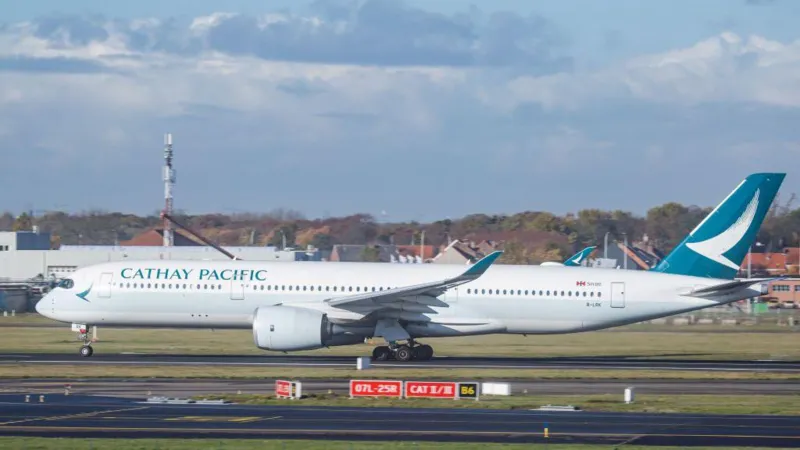Cathay Pacific faces major disruptions, halts flights after engine failure
Hong Kong’s leading airline Cathay Pacific is grappling with a significant operational challenge after an engine component on one of its Airbus A350 aircraft suffered a serious failure. The disruption has forced the cancellation of several flights, disrupting travel plans on key international routes.
Engine failure forces emergency landing
The incident occurred earlier this week, when a Cathay Pacific flight from Hong Kong to Zurich was forced to turn back to its departure city due to an engine failure. The airline has since reported that the problem was traced to a faulty component of the Rolls-Royce Trent XWB-97 engine that powers its A350 fleet. The specific failure, described as unprecedented for this engine model, has had an immediate and widespread impact on the airline’s operations.

Cathay Pacific’s swift response included grounding all 48 of its Airbus A350 aircraft for thorough inspection. The precautionary measure aims to identify and fix similar problems across the entire fleet. The company has confirmed that faulty parts have been detected and are being replaced, causing a number of flights to be grounded.
Flight cancellations and operational disruptions
As a result of the inspections and repairs, Cathay Pacific has been forced to cancel two dozen flights since Monday. Affected routes include key international connections such as Sydney, Singapore, Bangkok, Tokyo, Osaka and Taipei. The airline has warned that these disruptions are expected to continue until at least Wednesday, affecting thousands of passengers worldwide.

The scale of the cancellations underlines the extent of the operational strain the airline is facing. Cathay Pacific has advised affected passengers to check their flight status and make alternative arrangements as necessary. The disruptions come at a challenging time for global airlines, which are still recovering from the pandemic-induced recession and facing rising operating costs. Rolls-Royce’s role and wider implications
Rolls-Royce, the manufacturer of the engines involved, has expressed its commitment to cooperating with Cathay Pacific and the relevant authorities to resolve the issue. The company has acknowledged that the engine component failure is a serious concern and has pledged to fully support the investigation.
The impact on Rolls-Royce has been immediate, with the company’s shares falling more than 6% during Monday’s trading session in London. The decline reflects investor concerns about the potential financial implications of the engine failure and the cost of repairs and replacements.
Earlier this year, Rolls-Royce announced plans to enhance its range of engines, including the Trent XWB-97. These improvements were aimed at increasing the performance and reliability of the engines. However, the current incident raises questions about the efficacy of these upgrades and the overall durability of the engine models in question.
Challenges for Cathay Pacific and the aviation industry
For Cathay Pacific, the engine failure is a significant operational setback. The airline has been a leader in adopting advanced, fuel-efficient aircraft technology, and the A350 fleet has been the backbone of its international operations. The current situation affects not only the airline’s schedule, but also its reputation for reliability.

In addition to managing the immediate repercussions of the engine failure, Cathay Pacific must also understand the broader implications for its relationships with passengers, regulators and industry partners. The incident may lead to increased scrutiny from aviation authorities and impact future purchasing decisions and operational strategies.
The broader aviation industry is also facing challenges in the wake of this incident. Airlines and manufacturers alike are constantly striving to increase safety and efficiency, and incidents such as these highlight the continued need for vigilance and innovation. The cost of addressing such failures can be considerable, and the industry will be watching closely to see how Cathay Pacific and Rolls-Royce handle the situation.
Looking Ahead: Repair and Recovery
Cathay Pacific has indicated that it is working diligently to complete inspections and repairs of its A350 fleet as quickly as possible. The airline is also focused on minimising the impact on its passengers and maintaining operational stability despite the current challenges.
For passengers affected by the cancellations, the airline has advised to stay informed via its website and customer service channels. Cathay Pacific is providing support to those whose travel plans have been disrupted, including rebooking options and compensation where appropriate.
The current situation is a reminder of the complexities and challenges inherent in the aviation industry. Cathay Pacific and Rolls-Royce have worked together to resolve the issue.
